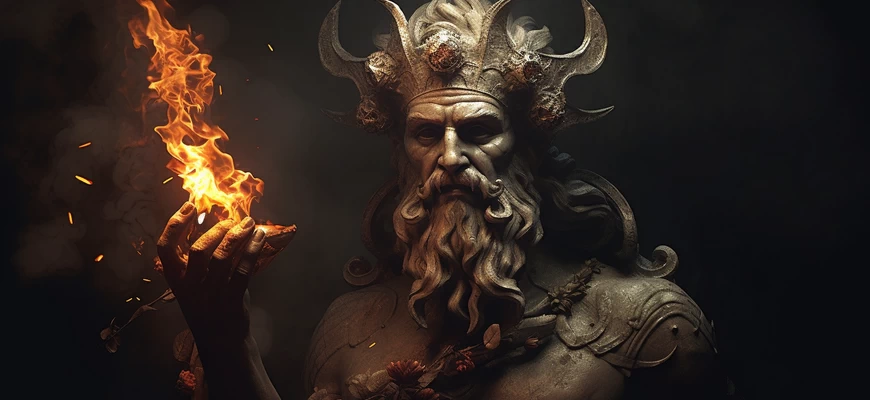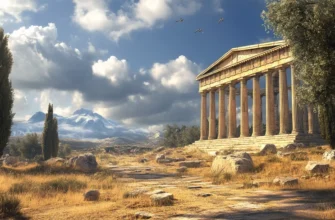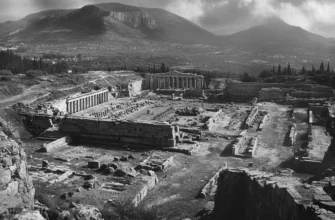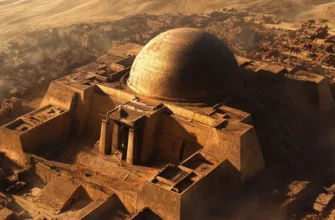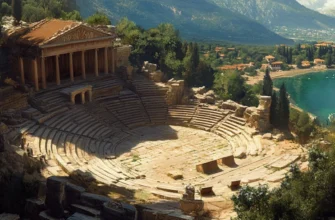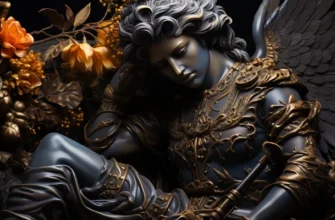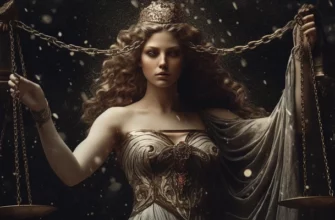Hades is the god of the underworld in ancient Greek mythology. He ruled the underworld, where the souls of the dead lived. Hades’ symbols were a horse and a boat, and he was accompanied by a dog. Like other gods, Hades played an important role in the lives of the ancient Greeks and was used in various rituals. He was also depicted in literature and art, allowing him to remain an important symbol of ancient Greek culture to this day.
- Who is Hades?
- The meaning of his name
- The origin and symbolism of Hades
- The legend of Hades’ appearance
- Characteristics of the god’s appearance and symbolism
- The role of Hades in ancient Greek mythology
- Ade’s residence and power
- Aeolus’ role in the pantheon of ancient Greek gods
- Hades’ interaction with other gods and humans
- Aeolus’ influence on modern culture and art
- The popularity of Hades in modern culture
- Conclusion
Who is Hades?
Hades is the god of the underworld in ancient Greek mythology, and he was the brother of Zeus and Poseidon. He was considered the ruler of the underworld, where the souls of the dead lived. Hades had many names: Hades, Hades, Hades, Pluto, and others. His symbols were a horse and a boat, and he was accompanied by a dog. Hades played an important role in the lives of the ancient Greeks and was associated with various rituals, including funeral rites. He was also often depicted in Greek mythology and art.
The meaning of his name
In ancient Greek mythology, the name Hades reflected the meaning of the god who ruled the underworld, where the souls of the dead lived. This name is usually translated as “invisible,” “the one who cannot be seen,” or “lord of the lifeless world.” This name reflected the essence of the god Hades and his authority as the ruler of the underworld, who could not be seen or touched in the world of the living.
The origin and symbolism of Hades
Hades is the god of the underworld in ancient Greek mythology, his name comes from the Greek word “ᾍδης” (Hades), meaning “invisible.” The symbols of Hades were a horse and a boat, associated with the passage of dead souls to the underworld, as well as a dog, which was considered a kind of guide to the world of the dead. In art, Hades was depicted with a black beard and dark clothing, symbolizing the underworld and its hellish nature. He was also often depicted with weapons, such as a double-headed staff, symbolizing his power over the underworld.
The legend of Hades’ appearance
According to legend, Hades was the third son of Cronus and Rhea, and the brother of Zeus and Poseidon. After defeating their father Cronus, Zeus, Poseidon, and Hades divided the world into three parts, and Hades became the ruler of the underworld. He received this power for his contribution to the victory over Cronus. According to another legend, Hades kidnapped and took Persephone, the daughter of Zeus and Demeter, into his possession, causing disorder in the world of the living and threatening all life on Earth. Therefore, Zeus made a deal with Hades and ensured that Persephone could return to the surface of the world for six months each year. This became the basis for the myth of winter and spring, where Persephone spends the winter in the underworld with Hades and returns to the surface of the earth in the spring.
Characteristics of the god’s appearance and symbolism
In ancient Greek mythology, Hades was depicted as an otherworldly god with a dark, sinister appearance. He was often depicted with a black beard, black clothes, and a cloak, symbolizing the dark nature of his power over the underworld. Hades’ symbols were a horse and a boat, associated with the passage of dead souls to the underworld, as well as a dog, which was the guide of souls to the world of the dead. To emphasize his power, Hades was often depicted with weapons such as a double-headed staff or helmet. In some cases, Hades was depicted with wings or a snake wrapped around his neck, indicating his immortality and power over the underworld.
The role of Hades in ancient Greek mythology
Hades played an important role in ancient Greek mythology as the god of the underworld and ruler of the realm of the dead. He was considered a fearsome and merciless god who ruled in the darkness of the underworld and decided the fate of the souls of the dead. According to mythology, Hades forced Demeter, the goddess of rebirth, to allow her daughter, Persephone, to return from the underworld, but only for six months each year. This legend became an explanation for the changing seasons and symbolized the cycle of life and death. Hades also played the role of judge in the underworld, examining the souls of the dead and deciding who should be punished or rewarded. His power and ruthlessness made the Greeks fear him and respect his authority, so Hades played a significant role in the religion and culture of the ancient Greek world.
Ade’s residence and power
As an underground god, Ade lived in the realm of the dead, known as Hades, which was located underground. His power extended over the underworld, which consisted of three parts: Erebus, Tartarus, and Lethe. He ruled over the souls of the dead and was the judge of the underworld, deciding where each soul should be placed and whether it should be punished or rewarded. His power and ruthlessness made the Greeks respect his authority and fear his influence, making Hades an important god in the religion and culture of the ancient Greek world.
Aeolus’ role in the pantheon of ancient Greek gods
Aeolus played an important role in the ancient Greek pantheon as the god of the underworld and ruler of the souls of the dead. His role was important in rituals related to death and funerals, and he was often depicted on vases and other art objects. But unlike other ancient Greek gods, Hades was not often mentioned in mythology or poetry, and his name was spoken with fear and respect. His power over the underworld allowed him to influence the lives of the living, who had to fear his wrath and respect his authority. Thus, Hades was an important member of the pantheon of ancient Greek gods and played an important role in the religion and culture of the ancient Greek world.
Hades’ interaction with other gods and humans
As the god of the underworld and ruler of the souls of the dead, Hades had limited interaction with other gods and humans. He usually remained distant from the ancient Greek world and was granted a certain status of inviolability. However, Hades sometimes met with other gods, such as Hermes or Zeus, to discuss issues related to the world of the dead and the passage of souls to the underworld.
As for humans, Hades had no direct interaction with them, but his power over the underworld and his influence over the souls of the dead compelled people to respect him and perform rituals related to death and burial. In this context, Hades can be seen as a mediator between the living and the dead, which allowed him to influence the lives of living people.
Aeolus’ influence on modern culture and art
The mythology of Aeolus has survived to this day and has a great influence on modern culture and art. He is often mentioned in literature, including novels and poems about Greek gods, as well as in films and games.
In art, Hades is depicted as a fearsome and powerful god who holds the keys to the underworld and wields great power over the souls of the dead. His image often has a dark and mysterious aura, and his symbols, such as the trident and keys, have become popular elements in graphic design and tattoos.
Ideas about Hades have also influenced modern psychology, especially theories about the subconscious and the shadow side of the human psyche. It is believed that Hades may symbolize unconscious thoughts and feelings that are subject to the power of the shadow hidden in the subconscious.
Thus, the mythology of Hades has a profound influence on our culture and understanding of the human psyche, and his ideas and symbolism will live on for many years to come.
The popularity of Hades in modern culture
Hades remains a popular character in modern culture and appears in various forms of art and entertainment. For example, films and television shows such as Family Guy, Percy Jackson and the Sea of Monsters, and American Gods feature references to Hades and other gods from ancient Greek mythology.
Aeolus is also mentioned in various comic book publications, including Wonder Woman and Hades: Lord of the Dead. In the world of video games, he is the main character in the game Hades, which has become very popular among gamers.
Images of Hades, his symbols, and ideas are also used in the fashion and design world. His image can be found on clothing, accessories, and other merchandise.
Thus, Hades remains a popular and important character in modern culture and continues to inspire people’s creativity in various fields of art and entertainment.
Depictions of Hades in literature, film, and art
Hades is a god who appears in many works of world literature and art. For example, in Homer’s poem “The Odyssey,” Hades is depicted as the ruler of the underworld. In the works of Plato, Aristophanes, and other ancient Greek authors, Hades is described as a powerful and unattainable god.
Hades also appears quite often in modern literature and cinema. For example, in Rick Riordan’s novel Percy Jackson and the Sea of Monsters, Hades is portrayed as one of the main antagonists. Also, in films and TV series such as “Hercules,” “The Mist,” and “American God,” images of Hades and his cult appear.
In art, Hades has also been the subject of many works. For example, depictions of Hades can be seen in the works of Renaissance artists such as Leonardo da Vinci and Raphael Santi. In contemporary art, such as painting, sculpture, and installation art, one can also find works that depict Hades or reflect his symbolism and themes.
Thus, Hades remains an important character in the world of literature, cinema, and art, and continues to inspire people’s creativity in various fields.
Conclusion
Aïd – Ancient Greek god general, Hades was considered one of the most important gods in ancient Greek mythology, playing a key role in human life and death. His symbolism and image were widely used in culture and art, demonstrating his importance and influence on society. In the modern world, although there are many other gods and religions, Hades’ influence can still be seen in literature, cinema, and art. He remains an important figure who helps us better understand our own views on life and death.
